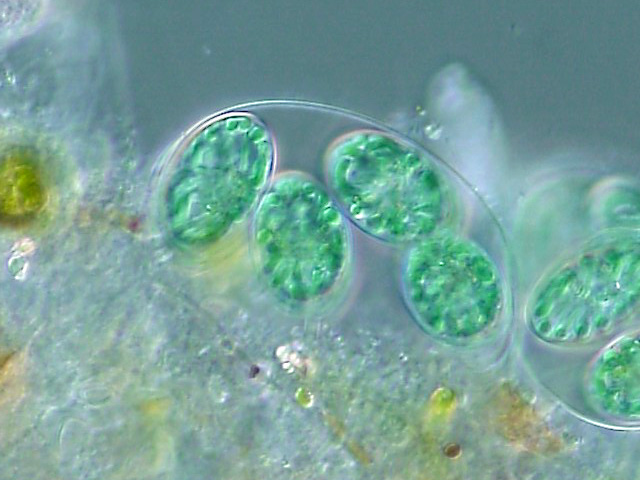Researchers at Monash University’s Department of Chemical Engineering, IITB-Monash Research Academy Mumbai, and The Indian Institute of Technology’s Department of Chemical Engineering have used reactive flash volatilisation (RFV) gasification technology to produce hydrogen using microalgae, giving rise to newer and cleaner forms of energy.
Findings show the greenhouse gas emissions of hydrogen production using RFV on microalgae is 36% less compared to the steam reforming of methane gas—the current best practice for hydrogen production.
With additional renewable energy processes, such as hydro-electricity, integrated with the researchers’ hydrogen production process, carbon emissions could drop by as much as 87%.
The research, published in the Journal of Cleaner Production, also shows that with the prevailing cost of hydrogen at $10 per kilo, and using RFV to produce the gas, the payback period of initial investment was just 3.78 years with a 22% internal rate of return.
The Monash-led team is the world leader in RFV gasification technology and analysis. RFV is a gasification process that uses oxygen and steam that converts biomass or fossil fuel-based carbon materials into gases.
Currently, the production of microalgae does not meet commercial demand. However, microalgae cultivation for energy applications could also provide additional revenue streams for rural communities, potentially making them self-sufficient, researchers say.
“Hydrogen and methane are clean sources of fuel and green chemical synthesis only if they are produced from renewable resources. At present, 96% of hydrogen and all methane is produced using non-renewable resources,” Associate Professor Akshat Tanksale from Monash University and research co-author said.
“Microalgae as a feedstock is attractive due to its high carbon dioxide fixation efficiency, growth rate, photosynthetic efficiency, ability to grow in brackish water—like rivers and lakes—and the ability to cultivate it on land not suitable for agriculture.
“Water and renewable electricity integration with microalgae harvesting can bring down the costs and increase the sustainability of hydrogen production from this process.”
Dr. Yogendra Shastri from the Department of Chemical Engineering at IITB-Monash Research Academy Mumbai said climate change concerns have led to an increasing push for cleaner energy options, and microalgae could be a potential candidate to produce renewable fuel.
“Hydrogen is acknowledged as clean fuel since it doesn’t lead to the emission of greenhouse gases when used. However, the production of hydrogen also needs to be sustainable,” Dr. Shastri said.
“Biodiesel production from microalgae is limited due to low lipid extraction efficiency, less than 20%, and the high cost of microalgae harvesting and drying.
“Furthermore, microalgae-based hydrogen and methane production haven’t yet been commercialized due to expensive pre-treatment, such as harvesting, drying and lipid extraction; low carbon conversion efficiency; and tar accumulation.”
Researchers performed the RFV of microalgae using temperatures ranging from 550-650°C using steam as the gasifying agent. This meant the dewatering or drying of microalgae wasn’t required and significantly reduced energy consumption.
Using India-based JSW Steel (the funding agency for this research) as a case study for their source of CO2 for microalgae cultivation, the research team estimated just under 12,800 kg an hour of microalgae would be available for hydrogen production at a rate of 1240 kg/h.
While the costs to develop infrastructure to cultivate microalgae and then refine it into hydrogen and methane are expensive, the overall return on investment in the long-term could make hydrogen and methane cost-effective and environmentally friendly fuel sources.
“Assuming a market price of $10/kg for hydrogen compressed to 700 bar pressure, the payback period for hydrogen production was 3.78 years with nearly 25% investment return. Moreover, the life cycle climate change impact was 7.56 kg of carbon dioxide for every kilogram of hydrogen produced,” Dr. Pratik Gholkar, Research student at IITB-Monash Research Academy Mumbai, said.
“This is an exciting look into the resources and technology available to the world in our quest to reduce the use of fossil fuels and drastically cut the amount of carbon emissions.”
Scientists weigh benefits of increased hydrogen production
More information:
Pratik Gholkar et al. Renewable hydrogen and methane production from microalgae: A techno-economic and life cycle assessment study, Journal of Cleaner Production (2020). DOI: 10.1016/j.jclepro.2020.123726
Citation:
Microalgae identified as clean source of hydrogen production (2021, February 15)
retrieved 15 February 2021
from https://techxplore.com/news/2021-02-microalgae-source-hydrogen-production.html
This document is subject to copyright. Apart from any fair dealing for the purpose of private study or research, no
part may be reproduced without the written permission. The content is provided for information purposes only.



